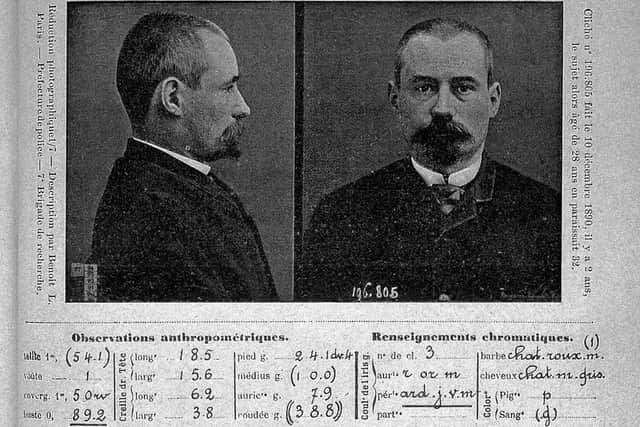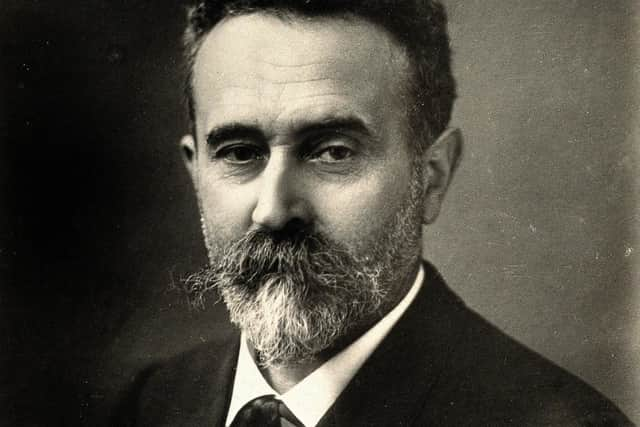Sheffield exhibit exploring the father of forensic science
and live on Freeview channel 276
Some of the most iconic investigation methods were actually pioneered during the 19th century when disciplines such as toxicology, crime scene photography and fingerprinting began to be introduced into criminal cases. The Victorian fascination with forensic investigation arguably reached its zenith in 1887 with the introduction of Sherlock Holmes.
A new exhibition at the National Emergency Services Museum in Sheffield, due to open within its original Victorian cells later this year, tells the story of Victorian crime and punishment and the development of some of the innovative investigation techniques that we remain familiar with today.
Advertisement
Hide AdAdvertisement
Hide AdOne of the pioneers of these techniques was Alphonse Bertillon. Known as the father of forensic science, he is little remembered today and yet during the 19th century was considered brilliant enough to outrank Sherlock Holmes himself! In ‘The Hound of the Baskervilles’, Dr James Mortimer states that Holmes is ‘the second highest expert in Europe’. When a disgruntled Sherlock asks who could possibly be above him, Mortimer responds ‘to the man of precisely scientific mind the work of Monsieur Bertillon must always appeal strongly.’


Born in Paris in 1853, Bertillon was the son of an esteemed statistician yet, unlike his father, was not known for his educational achievements. After young Alphonse failed medical school Bertillon senior decided to intervene, finding his son a position in the Préfecture de Police as a records clerk.
The young Bertillon spent his days copying the details of known criminals on to index cards but it wasn’t long until he began to see flaws in the system. He spent the next two years developing a recording system which went on to lay the foundations for future policing.
Bertillon devised a system which involved the measurement of 11 separate body parts. Together these unique measurements could be used to identify suspects, as no two individuals’ measurements would be exactly the same. Bertillon had essentially come up with a significant system of identification which preceded fingerprinting.
Advertisement
Hide AdAdvertisement
Hide AdHe presented his idea, which he called the anthropometric system or ‘Bertillonage’, in 1879 but it was another four years before it was formally adopted by the police department. Its success was almost immediate, identifying over 300 habitual offenders and leading to countless arrests in the first year alone.


The system seems simple, Measurements were added to an index card, along with information such as personal history, past convictions and other physical features. Crucially, alongside all this recorded information, Bertillon added photographs of the subject. This is arguably one of his most famous and enduring innovations; his ‘speaking portrait’ is what we now recognise as the famous (or sometimes infamous) police mugshot.
Bertillon’s system became standard practice in France in 1888, with police forces from across the world travelling to Paris to learn more.
Bertillon was also one of the first to formally introduce cameras to the crime scene, arguing the importance of evidence and accurately documenting the scene as it lay. He was even reportedly the first to photograph latent fingerprints and took one of the world’s first selfies, snapping his own mugshot!
Advertisement
Hide AdAdvertisement
Hide AdSadly, Bertillon’s ego destroyed him. In 1894 he was at the centre of the Dreyfus Affair, a trial which would go down as ‘one of the most absurd trials in the history of forensic science’. Mistakenly convicting an innocent man over poor handwriting analysis Bertillon became a laughing stock. His system was eventually replaced with fingerprinting and he died in 1914, aged 60. However, to this day, he is known as one of the greatest scientific minds and a true foe to all criminals.
The museum is looking for some new pieces for its crime and punishment exhibition contact [email protected].
The National Emergency Services Museum is currently closed due to COVID-19